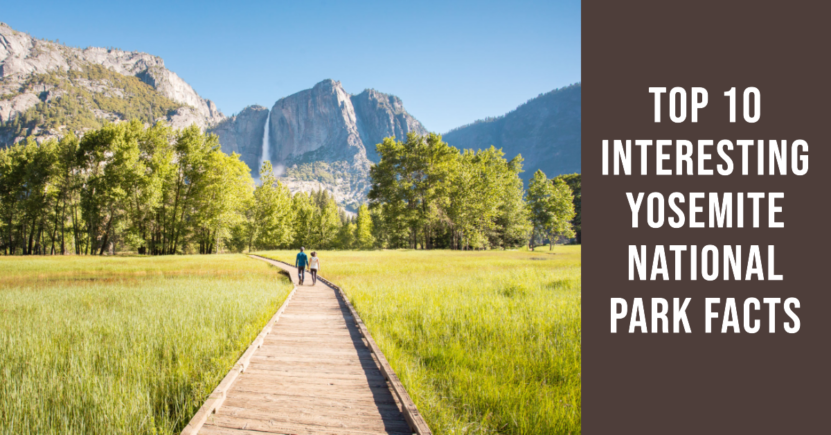Yosemite National Park is renowned for its granite cliffs, giant sequoia groves, and stunning natural features. It was established in 1890, and while it is not the oldest national park in the United States, it was the first to set the standard for the National Park System. The region had attracted miners, settlers, and tourists since the California Gold Rush in 1849, which led conservationists to urge President Abraham Lincoln to make Yosemite Valley a public trust of California. This marked the first time that the U.S. government protected land to allow visitors to enjoy it through recreational activities.
The park covers an area of 759,620 acres and boasts an elevation range from around 2,000 to 13,114 feet. The park is renowned for its waterfalls, mountains, glaciers, streams, lakes, and granite cliffs. Over 95% of the park is classified as wilderness, and it’s home to a diverse range of flora and fauna.
The top 10 interesting Yosemite National Park facts are listed below:
The Indigenous People of Yosemite and Their Legacy
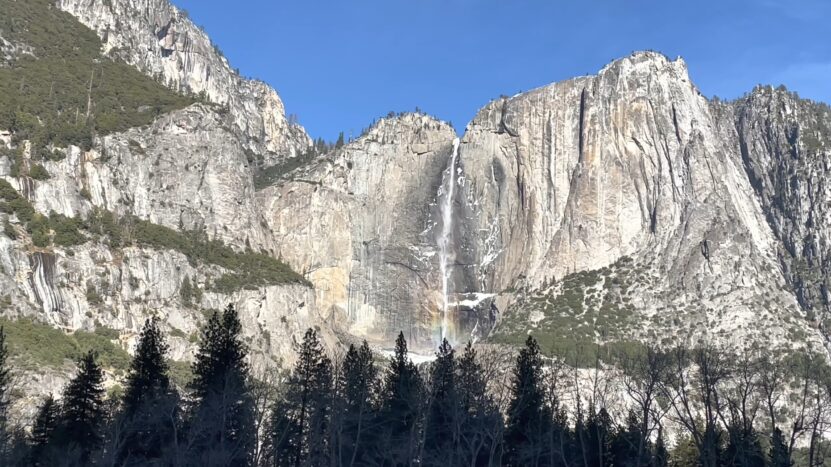
Yosemite National Park is not only renowned for its breathtaking natural beauty, but it is also home to a rich cultural history that dates back thousands of years. The park’s original inhabitants were the Ahwahneechee people, who lived in the Yosemite Valley for over 3000 years. Today, visitors to the park can explore the remnants of their ancient culture and learn about their way of life through numerous artifacts and archaeological sites.
The Ahwahneechee people were a tribe of the Southern Sierra Miwok, who were hunters and gatherers. They relied heavily on the natural resources of the Yosemite Valley for their survival, such as acorns, berries, and game animals. They also used the nearby streams and rivers for fishing and gathered obsidian from the mountains for tool-making.
Visitors to Yosemite can learn about the Ahwahneechee people’s way of life by exploring several historical sites in the park, including the Yosemite Museum and the Indian Village of Ahwahnee. The museum showcases artifacts and exhibits that depict the daily life, customs, and culture of the native tribes of the Yosemite region.
At the Indian Village of Ahwahnee, visitors can experience a recreated native village and witness traditional demonstrations such as basket weaving, fire making, and acorn processing. There are also several ancient petroglyphs, or rock carvings, throughout the park that offer a glimpse into the beliefs and traditions of the native people.
Despite the harsh impact of European settlement, which led to the displacement and forced relocation of the Ahwahneechee people, their legacy remains alive in Yosemite National Park. Their deep connection to the land and their reverence for nature is still felt throughout the park, making it a truly unique and special place to visit.
Camping
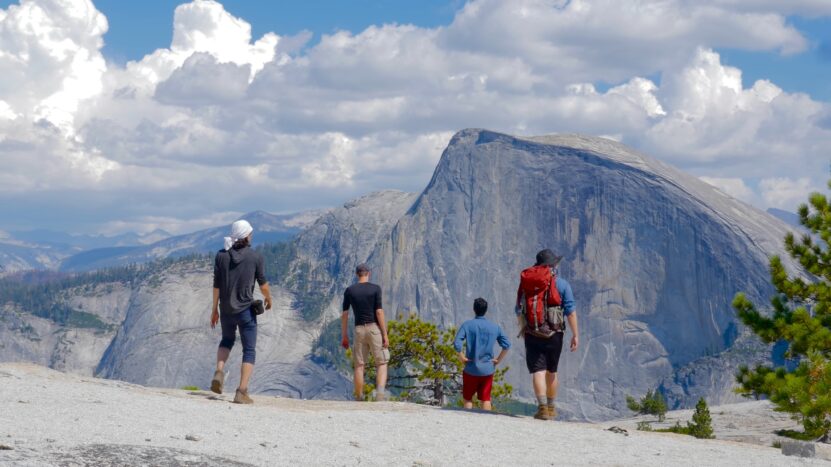
Yosemite National Park offers 13 different camping sites that cater to a range of preferences and needs. Camping is one of the most popular activities in the park, as visitors can immerse themselves in nature while enjoying breathtaking views and unique amenities.
Each camping site at Yosemite is different, offering a unique experience to visitors. Some sites offer stunning views of the park’s granite cliffs and waterfalls, while others are nestled in lush meadows or forests. Visitors can choose from rustic, primitive campsites or more developed ones with amenities such as showers, fire pits, and picnic tables.
Camping at Yosemite also provides visitors with the opportunity to experience the park’s incredible wildlife and natural beauty up close. Visitors can observe a variety of animals, including black bears, deer, coyotes, and mountain lions, in their natural habitats. They can also explore the park’s hiking trails, lakes, and rivers, which offer opportunities for swimming, fishing, and water sports.
Whether you prefer a back-to-basics camping experience or the comforts of a fully equipped campsite, Yosemite National Park has something to offer. With so many camping options, visitors can choose the site that best suits their needs and enjoy an unforgettable experience in one of America’s most beautiful national parks.
The Historical Significance of Yosemite National Park
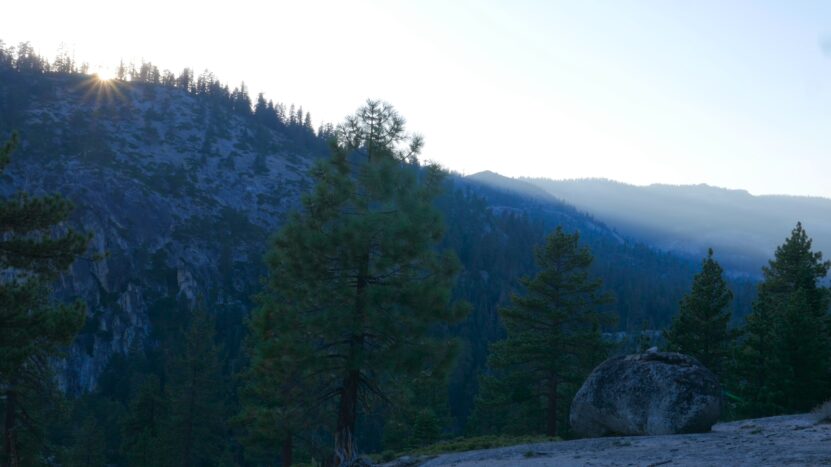
Yosemite National Park has a rich history that dates back to the mid-1800s. The first tourists were guided into the park in 1855, and it quickly became a popular destination for those seeking adventure and natural beauty. However, it wasn’t until 1890 that Yosemite was officially established as a national park, paving the way for the National Park System.
One of the most significant events in Yosemite’s history was President Abraham Lincoln signing an act through Congress in 1864 that protected the land and allowed visitors to enjoy it through recreational activities. This was the first time the U.S. government protected land with this purpose in mind, making Yosemite National Park a pioneer in conservation efforts.
The park covers an area of 759,620 acres and is home to 13 different camping sites, offering visitors the opportunity to experience the park’s natural beauty up close. Each campsite has its unique features, ranging from views to amenities.
Moreover, Yosemite is also known for its rich cultural heritage. The original inhabitants of the region date back 3,000 years, and visitors can review hundreds of relics that were once used by these native communities.
Popular Destination with Over 4 Million Visitors Annually
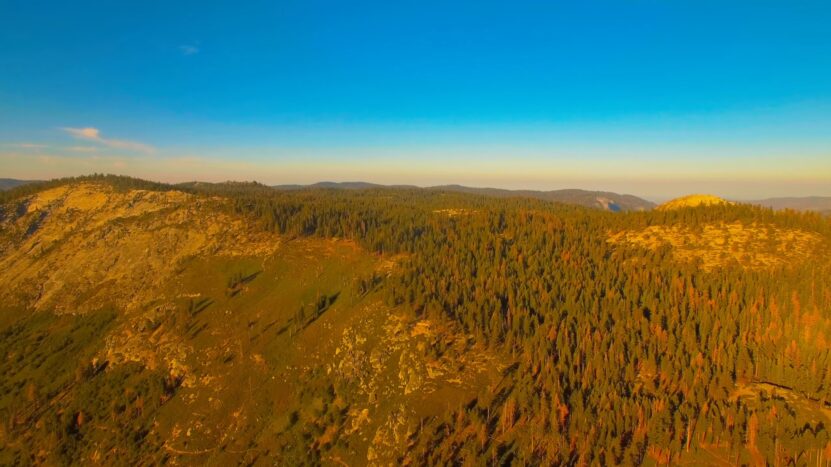
Yosemite National Park attracts millions of visitors each year from around the world. The park’s scenic beauty, unique natural features, and wide range of recreational opportunities make it an ideal vacation spot. The weather in Yosemite is mild year-round, making it an attractive destination for tourists seeking adventure and relaxation in nature.
Visitors can enjoy a wide range of activities, including hiking, biking, rock climbing, fishing, skiing, and snowshoeing. The park also offers guided tours and educational programs for visitors of all ages. Additionally, visitors can choose from a variety of accommodations, including campsites, lodges, and cabins.
One of the most popular activities at Yosemite is camping, with 13 different campsites to choose from. Each site offers its unique views and amenities, providing visitors with a truly immersive experience in nature. From stargazing to cooking over a campfire, camping in Yosemite offers a chance to disconnect from the hustle and bustle of everyday life and reconnect with the natural world.
Yosemite National Park is also known for its rich cultural history, with evidence of human habitation in the area dating back 3,000 years. Visitors can explore the park’s cultural resources, including hundreds of relics once used by the area’s indigenous people.
Whether you are a first-time visitor or a seasoned Yosemite enthusiast, there is always something new and exciting to discover in this stunning national park. With its awe-inspiring natural beauty, endless recreational opportunities, and rich cultural heritage, Yosemite truly has something for everyone.
Diverse Lodging Options
It offers a wide range of lodging options to accommodate visitors of different preferences and budgets. The park has over 13 campgrounds, ranging from primitive campsites to more developed sites with amenities such as showers and restrooms. In addition to campsites, the park also has cabins, cottages, and even condominiums available for rent. These lodging options offer a more comfortable and convenient stay, especially for those who prefer not to camp or who want to enjoy the park in the winter months when camping may not be feasible.
The cabins at Yosemite National Park provide a rustic experience, with some having full kitchens, bathrooms, and fireplaces. The cottages offer a more spacious and luxurious option, with multiple bedrooms, full kitchens, and scenic views. The condominiums are ideal for families or groups, as they offer more space and privacy, as well as modern amenities like Wi-Fi and cable TV.
Booking Yosemite National Park lodging is recommended well in advance, as the park can get crowded, particularly during peak season. Reservations can be made online or over the phone through the park’s authorized concessioner. Whether camping or staying in one of the park’s cabins or cottages, visitors can enjoy the natural beauty of Yosemite National Park and all it has to offer.
Take on the Challenge: Hiking the 17-Mile Yosemite National Park Half Dome Trail
The Half Dome hike at Yosemite National Park is one of the most popular and challenging hikes in the United States. The trail is approximately 17 miles round trip and can take up to 12 hours to complete.
The main attraction of this hike is the iconic Half Dome formation, which stands at 8,836 feet high and provides stunning panoramic views of the surrounding area. Hikers must obtain a permit in advance to climb to the top of the Half Dome.
The permit system is in place to ensure visitor safety and protect the natural resources of the park. The hike is not for the faint of heart and requires careful planning and preparation, including physical fitness, proper gear, and adequate food and water.
However, for those who are up to the challenge, the Half Dome hike is an unforgettable experience that showcases the natural beauty of Yosemite National Park.
Discover the stunning waterfalls of Yosemite National Parkcigan
Yosemite National Park is home to many breathtaking waterfalls, ranging from the tallest in North America to smaller ones that can be found on hiking trails throughout the park. The park’s most famous waterfall is Yosemite Falls, which stands at 2,425 feet and is visible from many points in the park. Visitors can also hike to the top of the falls or take a tour to experience the beauty up close.
Other notable waterfalls in Yosemite include Bridalveil Fall, which is one of the park’s most iconic landmarks, and Vernal and Nevada Falls, which can be seen on the Mist Trail. No matter which waterfall you choose to visit, you’re sure to be amazed by the natural beauty and power of these natural wonders.
It’s important to note that the waterfalls in Yosemite vary in intensity throughout the year, with peak flow typically occurring in the spring and early summer. So, if you want to witness the full force of these magnificent waterfalls, plan your trip accordingly. Don’t forget to bring a camera and capture the unforgettable views of Yosemite’s waterfalls.
Marvel at Giant Staircase
Yosemite National Park is home to numerous waterfalls, including the awe-inspiring Giant Staircase. This incredible natural wonder is made up of a 317-foot waterfall that cascades over the rocks, creating a staircase-like formation.
Visitors can hike to the base of the falls to get a closer look or admire the view from a distance. The sight of the water tumbling down the rocks is truly breathtaking and is sure to be a highlight of any trip to Yosemite. So, don’t forget to add the Giant Staircase to your list of must-see attractions when visiting the park.
Best Time to Visit
Yosemite National Park is a must-visit destination for nature lovers and adventure seekers. Planning a trip to this iconic park requires careful consideration of the best time to visit to fully experience its beauty.
The ideal time to visit Yosemite is during the months of May and June when the snow has melted, and the waterfalls are at their peak. During this time, the weather is pleasant, and the landscape is lush and green, making it the perfect time for hiking, camping, and other outdoor activities.
Landslide
Yosemite National Park is home to many natural wonders and attracts millions of visitors each year. However, the park has also experienced natural disasters such as landslides. One of the most significant landslides occurred in March of 1987 when over 1.5 million tons of gravel and debris fell into the valley.
The cleanup was a massive undertaking, and the area remained closed to tourists for months. Despite this event, Yosemite remains a popular destination for those seeking adventure and a connection to nature.
It has had its fair share of natural disasters throughout its history. In 2018, the Ferguson Fire burned over 96,000 acres of land and destroyed multiple structures within the park. However, park rangers and firefighters worked diligently to contain the fire and minimize damage to the park’s iconic landmarks.
Despite these challenges, Yosemite remains a beloved destination for outdoor enthusiasts and nature lovers from all around the world. Its stunning landscapes, rich history, and diverse flora and fauna continue to captivate and inspire visitors year after year.
FAQ
What is the best time to visit?
The best time to visit Yosemite National Park is during May and June when the natural beauty is at peak conditions. The waterfalls are flowing, the wildflowers are in bloom, and the weather is mild. However, it’s also the busiest time of the year, so expect crowds and higher prices. Another great time to visit is during the fall when the foliage changes colors, and the crowds have thinned out.
Are there bears in Yosemite National Park?
Yes, Yosemite National Park is home to both black bears and grizzly bears. It’s important to take precautions to avoid attracting bears, such as storing food and other scented items in bear-proof containers or lockers.
Can you camp there?
Yes, there are 13 different campgrounds in Yosemite National Park, ranging from primitive tent sites to RV sites with full hookups. Reservations are recommended, especially during the peak season.
How do I get to Yosemite National Park?
Yosemite National Park is located in California’s Sierra Nevada Mountains, about 3-4 hours from San Francisco and 5-6 hours from Los Angeles. The closest airport is Fresno Yosemite International Airport, but it’s still a 2-hour drive from the park. You can also drive or take a shuttle from nearby cities like Merced and Mariposa.
What are some of the best things to do in Yosemite National Park?
Some of the best things to do in Yosemite National Park include hiking to waterfalls like Yosemite Falls and Vernal Fall, climbing Half Dome, exploring the Mariposa Grove of Giant Sequoias, and taking in the stunning views from Glacier Point and Tunnel View. You can also go rock climbing, fishing, skiing, or snowshoeing, depending on the season.
Are there any guided tours?
Yes, there are several guided tours available in Yosemite National Park, including ranger-led walks, bus tours, and private tours with local companies. These tours can provide valuable insight into the park’s history, geology, and wildlife.
Can you drive through Yosemite National Park?
Yes, you can drive through Yosemite National Park on several scenic roads, including Tioga Road, Glacier Point Road, and the Yosemite Valley Loop. However, parking can be challenging during the peak season, so plan accordingly.
What is the elevation of Yosemite National Park?
Yosemite National Park’s elevation ranges from approximately 2,000 to 13,114 feet. The Valley floor is around 4,000 feet, while Half Dome and other peaks are over 10,000 feet.
Are there any restaurants or stores there?
Yes, there are several restaurants and stores in Yosemite National Park, including casual eateries, fine dining restaurants, and grocery stores. However, prices can be higher than outside the park, and some restaurants and stores may have limited hours or be closed during the off-season.
Are there any fees to enter Yosemite National Park?
Yes, there is an entrance fee to enter Yosemite National Park, which varies depending on the type of vehicle and the length of stay. However, there are several fee-free days throughout the year, such as National Park Week in April and National Public Lands Day in September.
Concluison
Yosemite National Park is a breathtaking destination with a rich history and fascinating facts. From its stunning waterfalls and granite cliffs to its diverse flora and fauna, Yosemite offers something for everyone. Whether you’re a hiker, camper, or just looking to relax in a beautiful natural setting, Yosemite National Park has it all. With its year-round gorgeous weather and a variety of lodging options, Yosemite is a must-visit destination for any nature lover.
Related Posts

